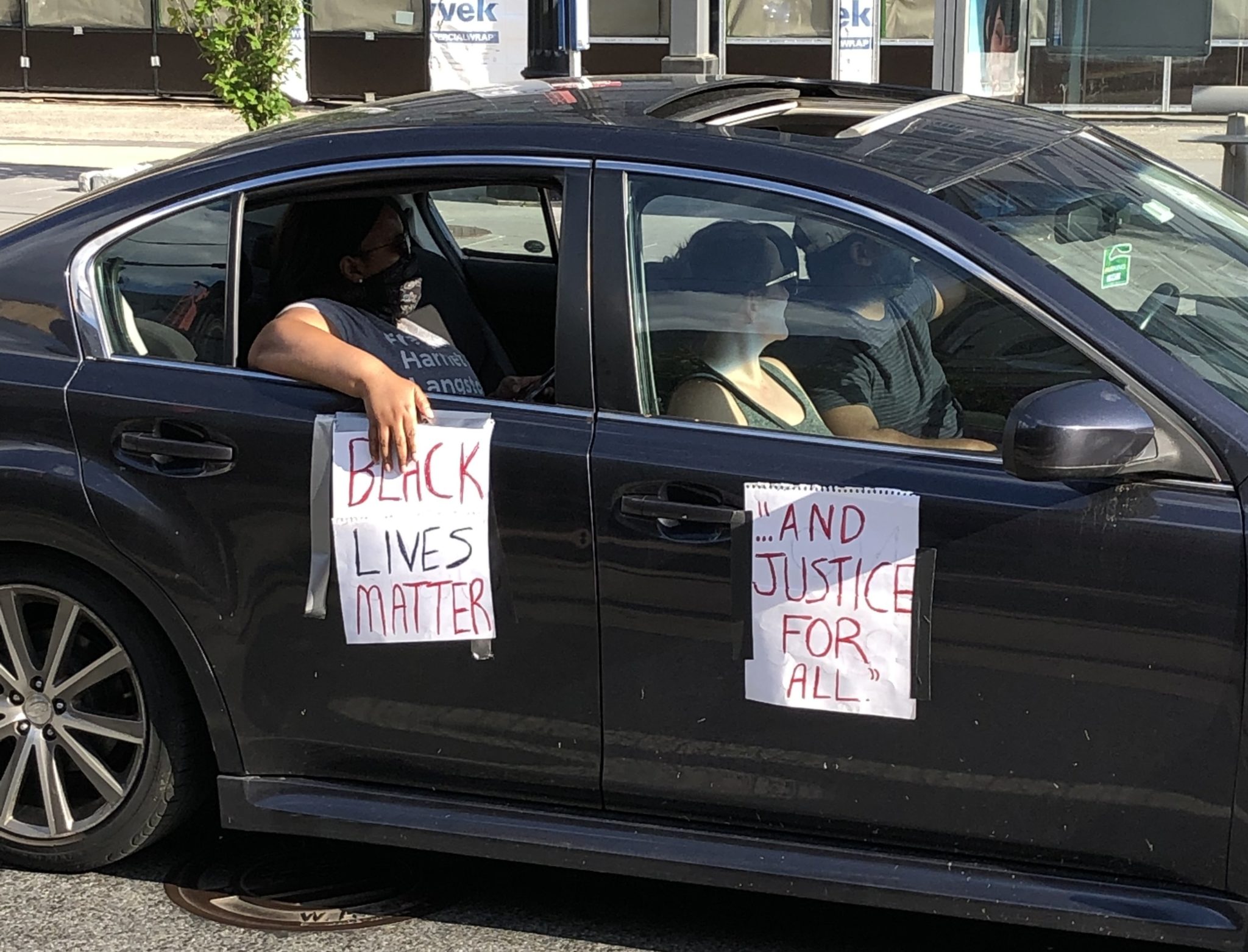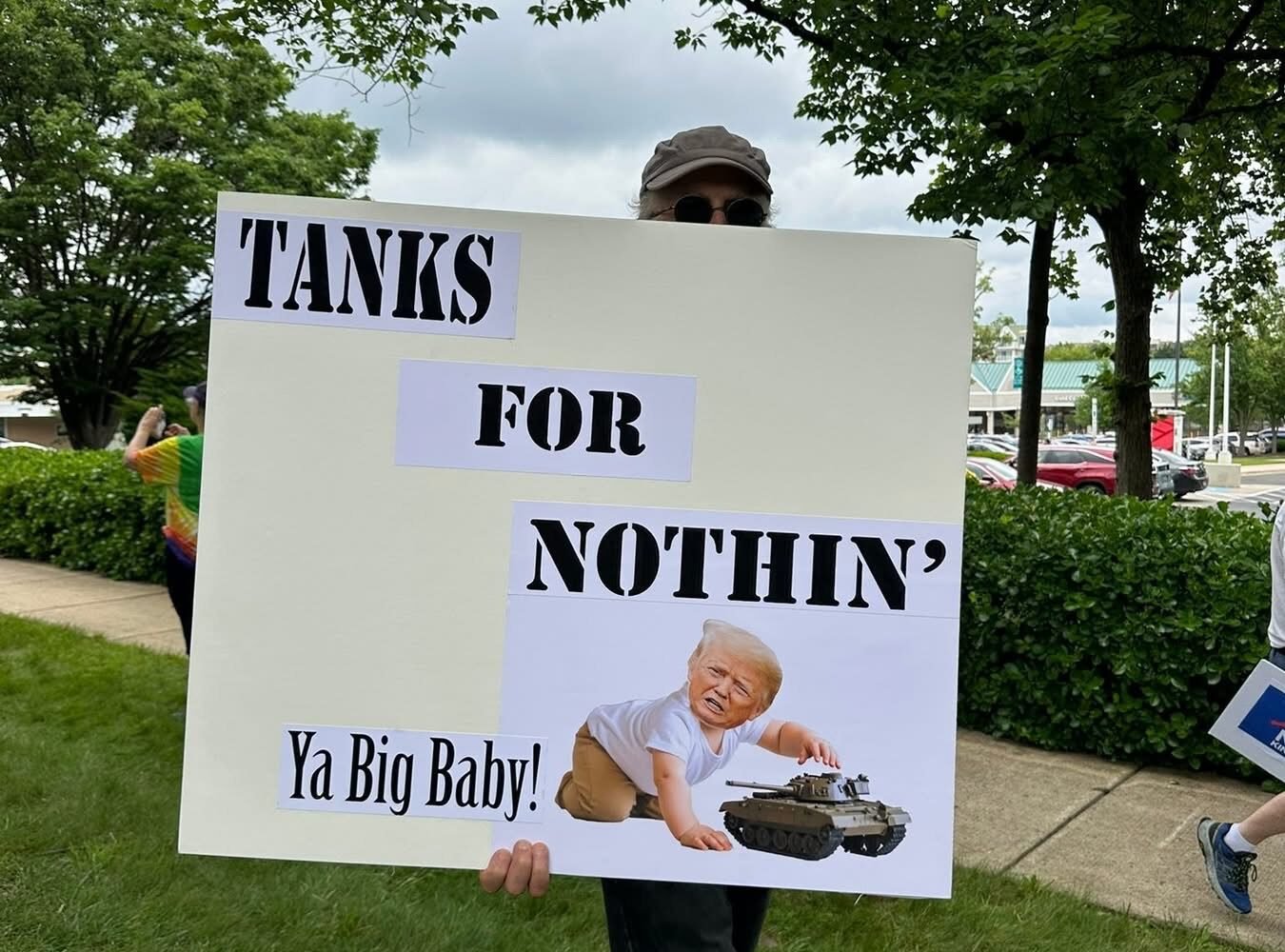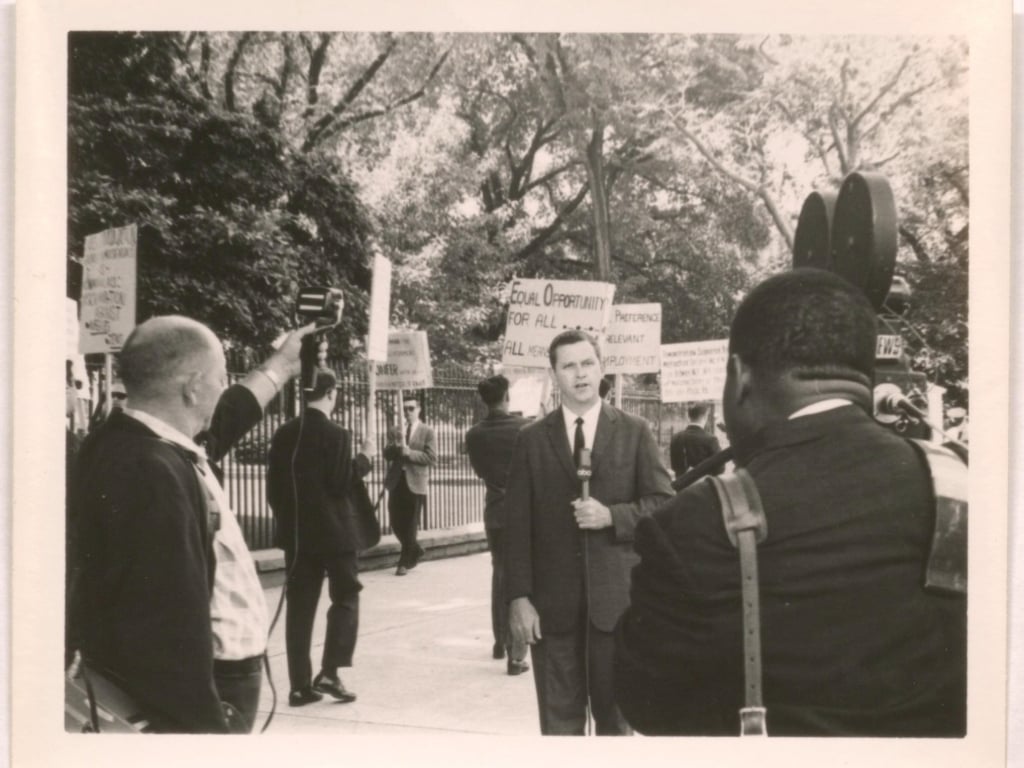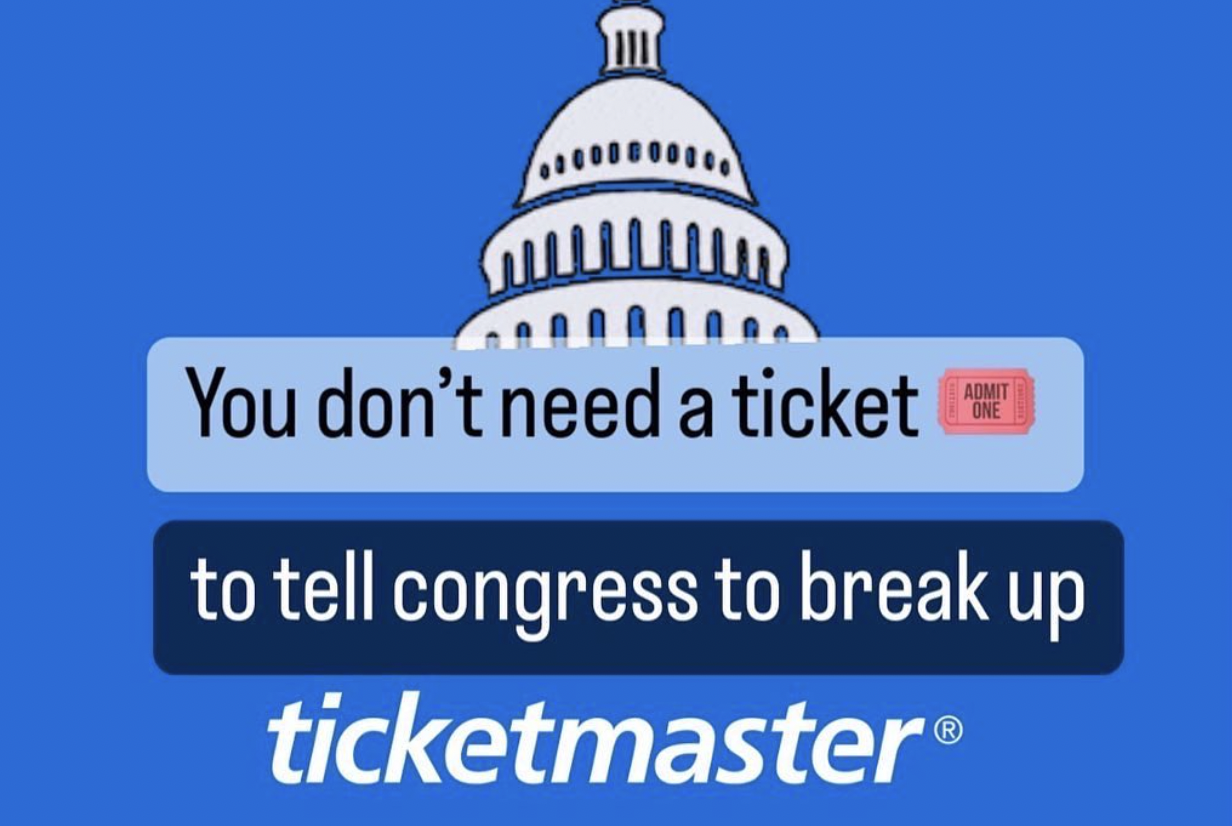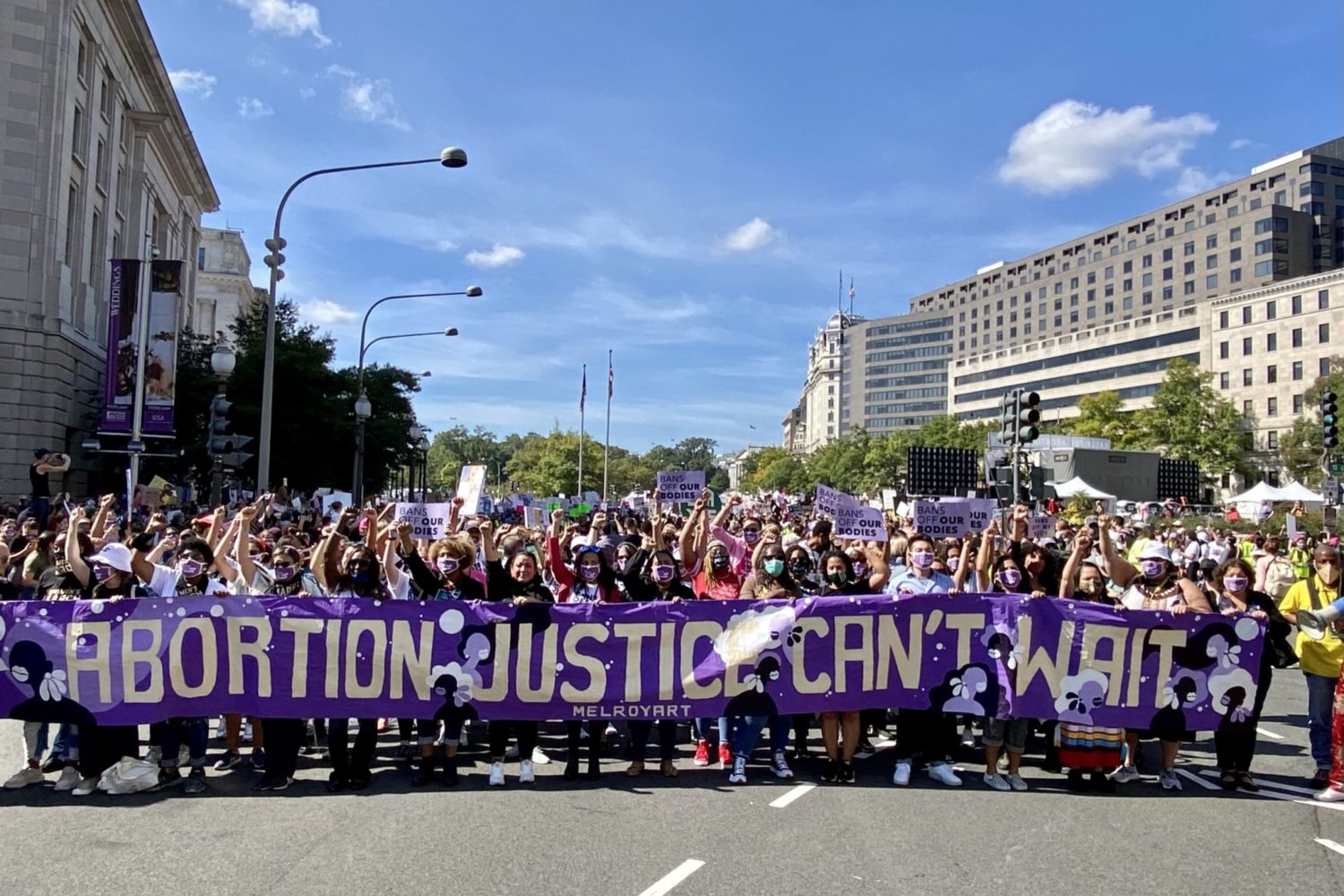“I don’t think I’ve ever seen anything like it,” murmured Dan, my neighbor, as we stood elbow to elbow on our respective front stoops. Dan had his ear cocked to the sky: The blare of car horns was audible from several blocks away, as it had been for the past two hours. Hundreds of cars had assembled in a long formation early Saturday, crisscrossing Washington D.C. to protest the death of George Floyd. Passengers held placards and shouted out messages to pedestrians, while drivers took special care to lean on the horn. Like a rainbow of color pallets that devolve into brown, dozens of car horns went up in unison. They seemed to converge on a single, deranged note—a sonographic protest message all its own, managing to convey both dread, panic and mass alarm.
“It must be working,” Dan went on with half a smile. “Because here we are, talking about it.” You couldn’t live within a 15 block radius and not hear it. To live in Northeast Washington this past weekend was to have your eardrums under unrelenting artillery fire.
The caravan was announced by DC’s Black Lives Matter chapter. On Saturday, organizers called for a “moving protest,” which began in a Safeway parking lot at 4:00 on the afternoon. Witness accounts described the caravan stretching “hundreds” of cars long. An intersection at Maine Avenue and 7th Southwest was briefly shut down, and where participants stood on their own cars to hoist signs that read “We Can’t Breathe.” Another participant painted their van with statistics about police-related deaths.
Maybe more than 300 – the caravan stretched literally miles from the Benning Rd Safeway to Eastern Market all at once. 🚗🚗🚗🚗🚗🚗🚗 #BlackLivesMatter https://t.co/a3FPbIp0WB
— Occupation Free DC (@OFDC_Campaign) May 31, 2020

Probably hundreds of cars on H Street — caravan has been here for at least two hours. pic.twitter.com/FCXCaZRPCn
— Ben Wofford (@BenWoffordDC) May 30, 2020
The tactic is spreading. Since this weekend, at least two large caravans have sprung up around the country, the first in Chicago. The second, in Oakland, saw an estimated two thousand cars.
The idea of a car caravan contains obvious appeal in the pandemic age: Protestors are socially-distanced, mimicking the effect of a righteous crowd but in discreet, aluminum-walled units. This is the same appeal that has led thousands of people to drive in pandemic parades to wish neighbors happy birthday—as Dan, my neighbor, had done earlier that month for his mother-in-law—and to wait in lines to receive nose-swabs for coronavirus from their driver-side windows.
But as the protests showed, the caravan is not just a concession to pandemic conditions: It contains a slate of cunning advantages, ones that make vehicles well suited to the task of mass protest. That became obvious on Saturday, when protestors snarled through traffic, bringing intersections to a grinding halt, and even momentarily trapping a few unwitting drivers in their ranks. As participants honked and waved signs, it became impossible for pedestrians to ignore the commotion—forcing bystanders into the position of being unable to look away, as many would no doubt prefer. The car caravan had turned a ritual of leisure—the Sunday drive—into a demand for witness.
But as protestors clashed with the Secret Service in front of the White House, the caravan’s other tactical benefits came into view. It greatly reduces the possibility, as so often happens in tense picket-lines, that an errant shove or a sharp word snowballs out of control. And it has the sheen of respectability that probably reflects the self-selecting crowd of car-owners. And yet no one would toss the tactic into the dismissive bin of “respectability politics”: As the horns went on for the third straight hour, it was apparent that many residents could think of little else—unable to read in their own bedrooms, to dine out at newly opened restaurants, to enjoy the park. One’s peace is disturbed, without feeling their person threatened.
And then there are advantages of defense: How, exactly, does law enforcement break up a car caravan? Honking and sign waving is not grounds for intervention. And even if it were, cars have long enjoyed an enhanced (if murky) status that protects against search and seizure, which gives its occupants fewer privileges against the state than if they were indoors, but far greater protections than if they were simply on foot.
As of now, the car caravan appears to be a novel idea specific to 2020. “In my world, we would say this is a ‘tactical innovation,'” said Dana Fisher, a professor at the University of Maryland who has studied protest movements in the Trump era. Fisher said that, to her knowledge, the technique wasn’t present at earlier Black Lives Matter protests dating back to Ferguson. The car caravan, she said, “fits very nicely in the moment. It also makes it very hard for institutional political actors to stop the expression of protest.”
Fisher pointed out that the first political deployments of cars came from some conservative protestors disputing lockdown orders in some parts of the country, albeit in smaller numbers. In Spain, an anti-lockdown rally drew protestors driving cars in the thousands, mobilized by leaders of the country’s far-right Vox party.
In some ways, a rethinking of protest tactics commends itself to the times, in which Americans have been challenged to match their forms of dissent to the sheer scale of ever-widening crises. Unemployment is at depression levels, while the country has lost more people to a plague than it did in Vietnam. “We’re definitely in a historical moment,” said Fisher. If anything, it was self-restraint on the part of professionalized political groups that was “the main reason that the tinder box didn’t go up earlier.”
That is what’s so noteworthy about centering protest around automobiles—its simultaneous novelty and its familiarity. From Jay-Z to Sandra Bland, cars long ago became polarized front-lines in the political battle of individual liberties and Black Lives Matter. Before he died in police custody after being suffocated on the pavement, it’s worth remembering what Floyd had been doing just moments before: Sitting idly in his car, from which a police officer pulled him out by his arms.
“The American really loves nothing but his automobile,” William Faulkner famously opined, one of countless authors who were fascinated by Americans obsession with the sanctity of the steering wheel as a token of escape and an avatar for freedom. Both are absent in the futureless world of the pandemic lockdown, and the futureless world of the unjustly killed.
In some ways, the nexus of our country’s two viruses sits on four wheels in the garage. And the car caravan suggests a creative breakthrough that has turned a symbol of deprivation into self-expression—not by burning cars, but putting them to use.

